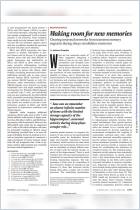
Read or listen offline
自动生成的音频
1×
自动生成的音频
Recommendation
Prime-age male labor participation has trended downward, globally, for decades, but why is the decline in the United States particularly severe? This 2016 analysis by the Obama administration White House uses statistical evidence to help uncover reasons behind the decline. Additionally, the report explains how institutional factors contribute to the negative trend and which policy changes could improve the situation. getAbstract recommends its findings to those interested in socioeconomic trends.
Take-Aways
About the Author
The White House Council of Economic Advisers is an agency within the Executive Office of the President that advises the US president on economic policy. This report was produced during the Barack Obama administration.

















Comment on this summary or 开始讨论